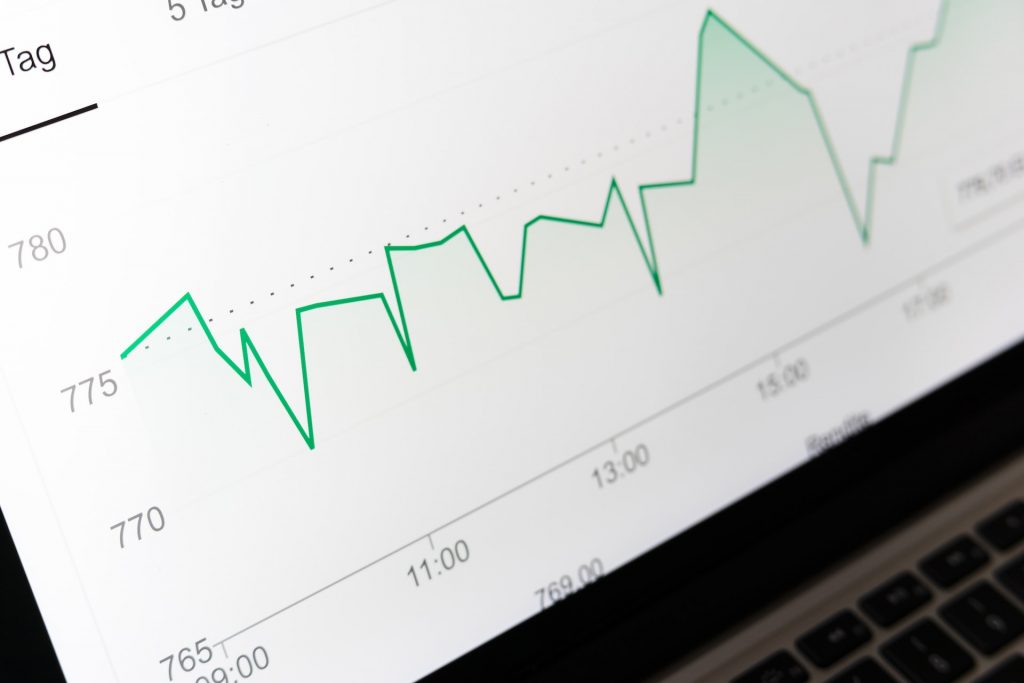Economic growth is a critical component of any successful economy and the impact of monetary policy on economic growth is an essential area for investigation. Monetary policy is the process of managing a nation’s money supply, thereby, its currency exchange rate which is used to maintain economic stability and ensure economic growth.
What is Monetary Policy?
Monetary policy is a powerful tool used by central banks to achieve specific economic objectives. It impacts economic growth by controlling the supply of money and influencing interest rates. Financial institutions, such as commercial banks, play a critical role in the transmission and Impact of Monetary Policy through financial markets. The Federal Reserve Bank implements monetary policy to achieve its dual mandate of maintaining price stability and promoting economic growth.
Types of Monetary Policy
Monetary policy can be either expansionary or contractionary, depending on the economic situation. Expansionary monetary policy increases the availability of money, which encourages firms and households to borrow and spend. On the contrary, contractionary monetary policy decreases the availability of money, which decreases borrowing and spending.
Role of monetary policy in economic growth
Monetary policy plays a crucial role in fostering economic growth. It refers to the actions taken by a central bank or monetary authority to manage and control the money supply, interest rates, and other monetary variables in an economy. The primary objective of monetary policy is to achieve price stability, but it also influences economic growth through various channels. Here are some key roles of the impact of monetary policy in promoting economic growth:
- Price stability: Maintaining stable prices is essential for economic growth as it provides certainty and reduces inflationary expectations. When prices are stable, businesses and consumers can make sound financial decisions, leading to a favourable investment climate and increased economic activity.
- Interest rate management: Central banks use monetary policy tools to influence interest rates, particularly short-term rates. By adjusting the interest rates, central banks can affect borrowing costs for businesses and individuals. Lower interest rates stimulate investment and consumption, leading to increased economic activity and higher growth rates.
- Investment and capital formation: Monetary policy affects the cost and availability of credit, which in turn influences investment decisions. When interest rates are low, businesses are more likely to borrow money for investment in capital goods, research and development, and expansion projects. Increased investment contributes to productivity growth, job creation, and overall economic expansion.
- Consumption and household spending: The impact of Monetary policy on the borrowing costs for households, including mortgages, auto loans, and personal loans. Lower interest rates encourage consumer spending by reducing the cost of borrowing, which stimulates economic growth. Increased consumer spending can lead to higher demand for goods and services, prompting businesses to expand production and employment.
- Exchange rates and export competitiveness: The impact of Monetary policy can influence exchange rates indirectly through interest rate differentials and capital flows. A country with a lower interest rate may experience a depreciation of its currency, making its exports more competitive in international markets. This can boost exports, improve trade balances, and contribute to economic growth.
- Financial market stability: Sound monetary policy helps maintain financial market stability, which is crucial for economic growth. By regulating and supervising financial institutions, central banks ensure the smooth functioning of the banking system and prevent systemic risks. A stable financial system fosters investor confidence, encourages capital flows, and supports economic activity.
- Managing inflation expectations: Monetary policy plays a vital role in anchoring inflation expectations. When people expect prices to remain stable in the long run, they are more likely to make long-term investment decisions and engage in productive activities. Stable inflation expectations promote economic stability, which is a prerequisite for sustained economic growth.
It’s important to note that the impact of monetary policy alone cannot drive sustainable economic growth. It should be complemented by appropriate fiscal policies, structural reforms, and a favourable business environment. Moreover, the effectiveness of monetary policy may vary depending on the specific circumstances of each economy.
What is the Impact of Monetary Policy on Economic Growth?
How Does Monetary Policy Affect Economic Growth?
In this article on the impact of Monetary Policy, we have discussed the Impact of Monetary Policy on economic growth in three ways which are listed below:
- By influencing the availability of credit
- By the cost of borrowing
- By the level of consumer spending
Effect of Availability of Credit on Economic Growth
The interest rate has an impact on credit availability. When interest rates are low, banks and other lenders are more likely to make loans, as they are less risky. Low-interest rates also make borrowing attractive to consumers, as they are more likely to afford the repayment of their loans. In turn, this increase in borrowing increases consumer spending, resulting in an increase in economic growth.

Effect of Borrowing Costs on Economic Growth
Interest rates also have an impact on borrowing costs which in turn tells us that the impact of monetary policy on economic growth is abundantly clear. When interest rates are low, the cost of borrowing is reduced because lenders charge less for loans. This makes it more attractive for businesses to borrow in order to invest, as the cost of borrowing is reduced. Additionally, decreasing borrowing costs may have an impact on consumer spending as individuals will be able to borrow more cheaply. As a result, higher consumer spending can help drive growth in the economy.
Effect of Consumer Spending on Economic Growth
Finally, changes in the money supply have an impact on consumer spending. An increase in the money supply stimulates consumer spending as more money is available for purchasing goods and services. This can lead to an increase in economic growth as businesses receive more revenue from consumer purchases. Similarly, a decrease in the money supply will decrease consumer spending, resulting in a decrease in economic growth. The impact of monetary policy on economic growth is apparent in one way or another.
Central Banks and Monetary Policy
One way in which central banks implement monetary policy is through open market operations. Open market operations involve the buying and selling of government securities, which impacts the supply of money in the economy. When the central bank buys government securities, it injects money into the financial system. Which increases the supply of money and reduces short-term interest rates.
On the other hand, when the central bank sells government securities, it removes money from the system. Which reduces the supply of money and increases short-term interest rates.
What does economic growth mean in monetary policy?
In the impact of monetary policy, economic growth refers to an increase in the overall output of goods and services within an economy over a certain period of time. It is typically measured by indicators such as Gross Domestic Product (GDP), employment rates, and productivity levels.
Economic growth is a crucial consideration for central banks and policymakers when formulating monetary policy. It is generally desirable to have sustainable and steady economic growth as it contributes to higher living standards, increased employment opportunities, and improved prosperity for individuals and businesses.
Monetary policy plays a key role in influencing economic growth by managing the money supply, interest rates, and other financial conditions. Central banks, such as the Federal Reserve in the United States, use various tools to influence economic activity and promote growth. These tools include adjusting short-term interest rates, conducting open market operations (buying or selling government securities), and implementing reserve requirements for banks.
When the central bank aims to stimulate economic growth, it typically adopts an expansionary monetary policy. This involves reducing interest rates, making borrowing cheaper for businesses and consumers, and thereby encouraging investment and spending. Lower interest rates can also stimulate borrowing for business expansion, which can lead to job creation and increased production.
Conversely, if the economy is growing too rapidly and there are concerns about inflationary pressures, the central bank may implement a contractionary monetary policy. This involves increasing interest rates to curb borrowing and spending, aiming to slow down economic growth and prevent excessive inflation.
Overall, in the context of monetary policy, economic growth refers to the central bank’s objective of maintaining a balanced and sustainable expansion of the economy while managing inflationary pressures and promoting stability in financial markets.
On a Final Note
To summarize, the impact of monetary policy on economic growth is quite immense. Expansionary monetary policy can encourage businesses and households to borrow and spend money, which can boost economic growth. Contractionary monetary policy, on the contrary, can restrict borrowing and spending, resulting in slower economic growth.

Investors should use the central bank’s interest rate decision while interpreting relevant data and deciding on investing strategies. And its influence on credit availability and borrowing costs when interpreting relevant data and making investment decisions.
Investors should also keep an eye on money supply and consumer spending since both might have an impact on economic development. Investors can acquire insight into the status of the economy and decide whether or not to invest by observing these indicators.
Additionally, investors should use metrics such as GDP and unemployment to acquire a better understanding of the economy and make decisions.
In conclusion, the impact of monetary policy on economic growth comes from financial institutions and markets. The Federal Reserve Bank in the US and the European Central Bank in Europe use various tools to implement monetary policy. These tools influence the supply of money and credit, which impacts short-term interest rates, exchange rates, and economic growth. Through their actions, central banks can promote economic growth while maintaining price stability, fulfilling their dual mandate.
Check out our articles to read out more Impact of the Monetary Policy on Interest Rates and Price Stability.




[…] impact of -monetary policy stability Businesses and consumers can make wise economic choices when prices are stable without […]